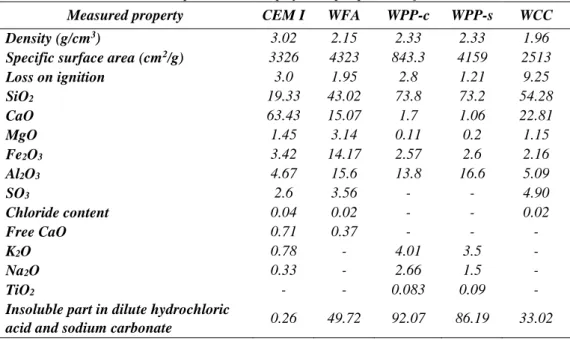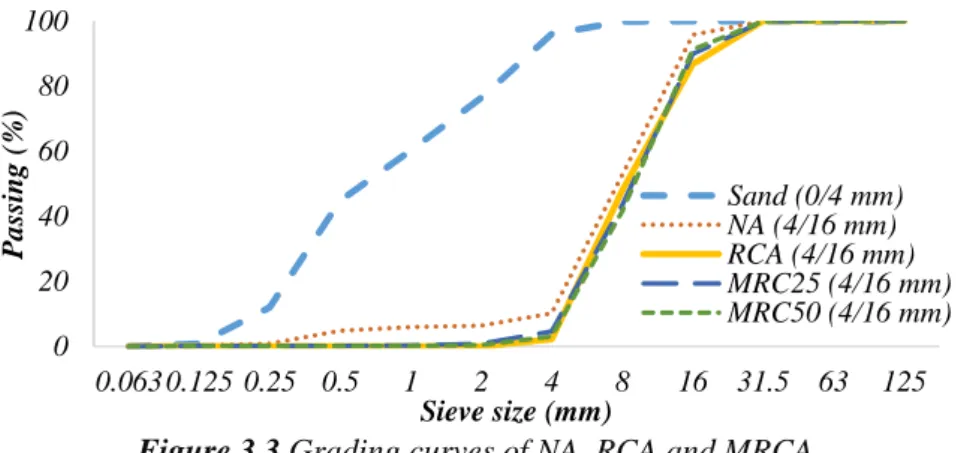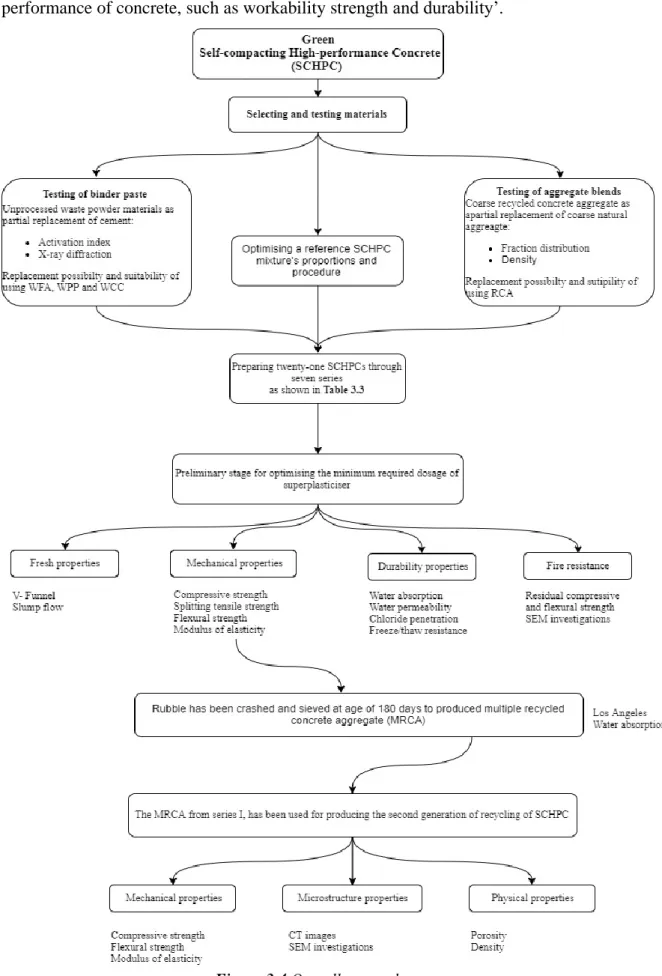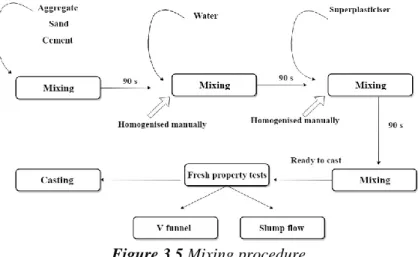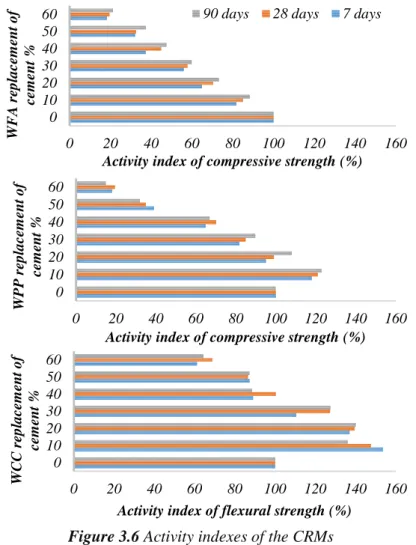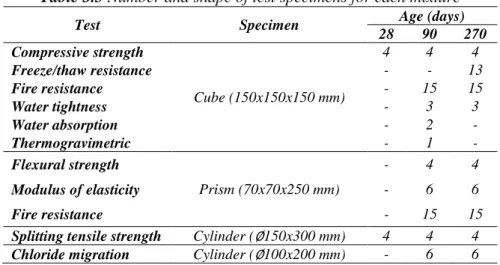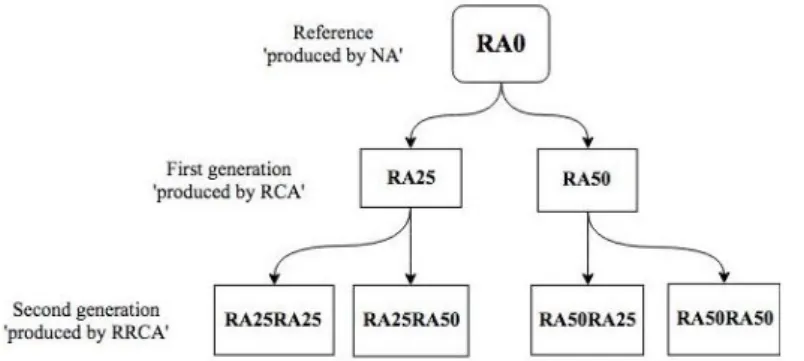The SCHPCs were produced by incorporating coarse recycled concrete aggregate (RCA) as a partial replacement of coarse natural aggregate (NA) and/or of three unprocessed waste powder materials as cement replacement materials (CRMs). SCHPCs have been tested for their freshness, mechanical and durability properties in addition to fire resistance.
INTRODUCTION
- Challenges
- Research significance
- Special issue
- Scope and limitations
- Aim and objectives
The laboratory tests were carried out at different ages and 270 days) of the manufactured concrete to cover the short and long terms of the mechanical properties, durability performance and fire resistance, in addition to the fresh properties, of SCHPC. To specify the possible replacement quantity limits of RCA and/or CRMs in the workability window of the SCHPC and define the minimum dosage of superplasticizer;.
LITERATURE REVIEW
- Self-compacting concrete
- High-performance concrete
- Self-compacting high-performance concrete
- Advantages of SCHPC
- Performance criteria of SCHPC
- Material aspects of SCHPC
- Sustainability of concrete
- Recycled concrete aggregate
- Waste powder materials
- Multiple use of recycled aggregate concrete
- Key properties of Green SCHPC
- Fresh properties
- Mechanical properties
- Durability properties
- Fire resistance
Passing ability, which is defined by EFNARC (2002) as 'the ability of fresh SCHPC to pass. ACI defines durability as 'the ability of a material to resist weathering, chemical attack, abrasion and other conditions of use' (ACI CT-13 2013), which are serious phenomena that must be considered in the conceptual design phase; suitable materials should be selected taking into account the target environment to achieve good structural life (fib, 2009).
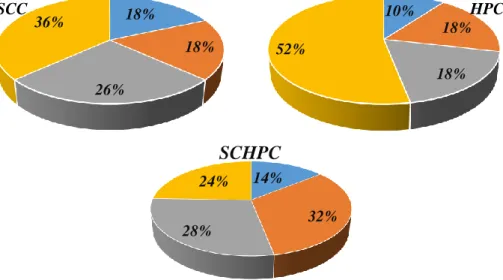
EXPERIMENTAL PROGRAM
- Background
- Materials
- Binder
- Aggregate
- Water and Superplastiser
- Mix design
- Reference mixture optimisation
- Paste stage
- Concrete stage
- Life cycle of Green SCHPC
- Multiple recycled concrete aggregate (MRCA)
- Multiple recycled aggregate concrete (MRAC)
- Design variables and constraints
- Test method and evaluation
- Fresh properties
- Mechanical properties
- Durability properties
- Fire resistance
- Physical and microstructure properties
- Crushed aggregate tests
Ahmad and Alghamdi (2014) defined the optimization of the concrete mix design as “a process of searching for a. Activity index was expressed as the ratio of the strength of the cement paste mixture (containing CRM replacement) and strength of the reference mixture (with only OPC), which expressed the hydration rate of the CRM (Mucsi and Csőke, 2012). Adding the results of this mixture, the relationship between the properties of the crushed aggregates and the replacement amount of RCA in its parent concrete will be based on four points.
The number and shapes of the tested samples for each mixture and at each age of testing are shown in Table 3.4. Using a rapid chloride migration test, the value of the chloride migration coefficient can be measured. This value quantitatively measures the resistance of the tested material to chloride migration for service life calculations.
Determination of water absorption capacity based on saturated surface dryness of the aggregate particles was used to calculate the water absorption of the crushed aggregate in this study. Towels of the surface of the aggregates made it possible to achieve the saturated surface dry state according to the following standards.
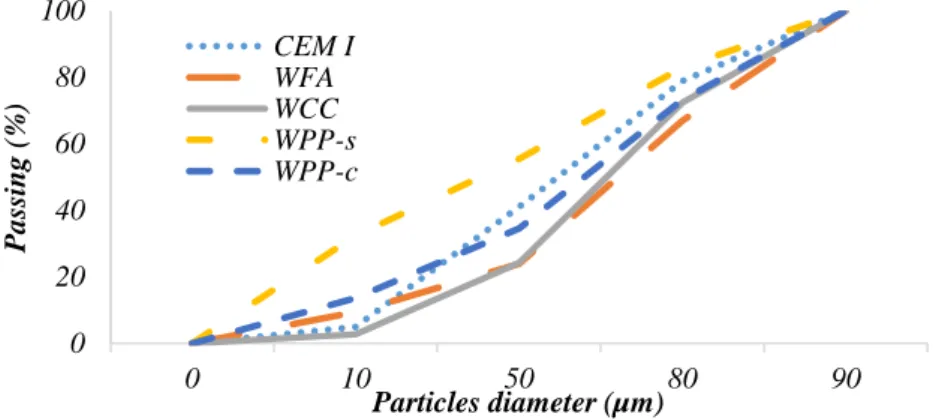
RESULTS
- Fresh properties
- Superplasticiser demand
- Slump flow and V-funnel
- Mechanical properties
- Compressive strength
- Splitting tensile strength
- Flexural strength
- Modulus of elasticity
- Durability properties
- Water absorption
- Water penetration
- Chloride migration
- Freeze/thaw resistance
- Residual mechanical properties after temperature elevation
- Results at age of 90 days
- Results at age of 270 days
- Scanning electron microscopy analysis
WFA also improved the flexural strength to the replacement of cement by 15% in the case of RAC, where it improved the ITZ due to the high water absorption of the RCA. This behavior may be related to the chemical composition of WPP, which contained minerals and thus increased the ductility of the concrete. However, at day 270, its behavior returned to be consistent due to the progress of the pozzolanic activity.
In the case of the internal frost damage test, the residual compressive strength decreased only slightly, which could therefore be neglected. In general, using any of the CRMs with up to 15% is good from the. The optimal mixes with any of the three CRMs with RCA are shown in Figure 4.22, where the optimal replacement of cement by any CRM was up to 15%.
Total loss of residual flexural strength (%) Total area under the relative flexural residual strength curve (20-800 °C). In the case of non-porous aggregate, the ITZ is clearly defined due to the differences between the nature of the materials.
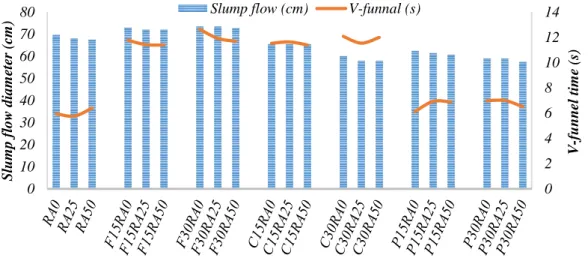
MULTIPLE RECYCLING OF SCHPC
Properties of multiple recycled concrete aggregate
- Los Angeles test results
- Water absorption capacity
This relationship could be justified by the homogeneity of the aggregate mixture in the base concrete, which affected the distribution of aggregates in the mixtures. Meanwhile, 50% replacement of NA with RCA in the base concrete mix changed the dominant type of aggregate; otherwise homogeneity was improved. An increase in the amount of bonded mortar, which increased the recycle generation and/or the replacement amount of RCA in the base concrete, was the main reason for the rise in the Los Angeles indexes.
Therefore, improving the wear resistance of the mortar in the parent concrete (then the attached mortar in the crushed aggregate) could increase the wear resistance of the RCA or MRCA which was made from it. A linear relationship (R² = 0.93) could be expressed by the absorption capacity of MRCA with respect to the replacement amount of the natural aggregate with RCA in their parent concrete, as shown in Figure 5.3. This relationship was expected due to the increase of the adhered mortar by increasing the RCA dosage in the parent concrete, which was the main reason for the increase in the absorption capacity of RCA or MRCA.
Despite the lack of relationships between the Los Angeles indices of crushed aggregates and the mechanical properties of their parent concrete; a strong regression relationship was observed between the water absorption capacity of crushed aggregates and their parent concrete. A linear relationship can predict the water absorption capacity of concrete or its crushed aggregate if.
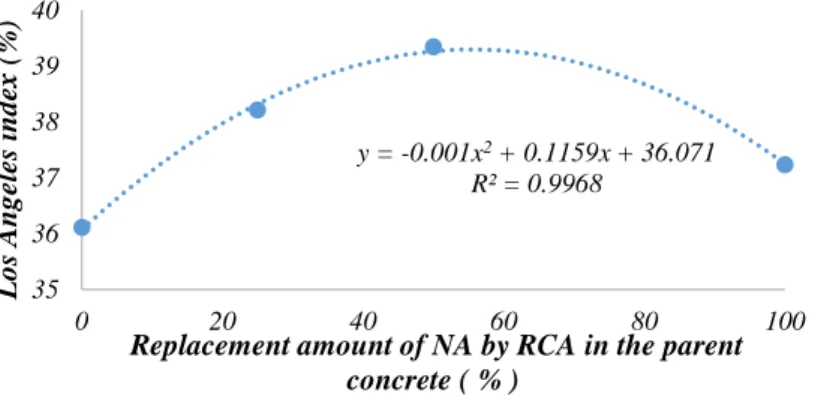
Properties of multiple recycled aggregate concrete
- Fresh properties
- Mechanical Properties
- Compressive strength
- Flexural strength and modulus of elasticity
- Physical and microstructural properties
The decreasing trend in the slump diameter with the increase in the amount of RCA is consistent with most research findings (Omrane et al., 2017). This finding serves as a link between the results of the studies of Huda and Alam (2014) and Salesa et al. However, the use of up to 50% of MRCA slightly affected the concrete strength due to the small amount of the replaced coarse aggregate in the overall volume of aggregate, which agreed with Abreu et al.
In the study, however, replacing NA with RCA up to 50% or with MRCA up to 25% showed the opposite. The produced concrete had a high strength level and a low w/c, which mainly resulted in an increase in the modulus of elasticity and flexural strength of the first and second generation RCA. The results of the second generation MRAC agreed with those found by Marie and Quiasrawi (2012).
This phenomenon could be related to the homogeneity of the mixture in the first case, where adding 50% meant that the coarse aggregate in the mixture had two kinds of aggregate with the same amount for each. Whereas the porous materials were replaced by other porous materials in the second generation through the crushing of the first generation concrete.
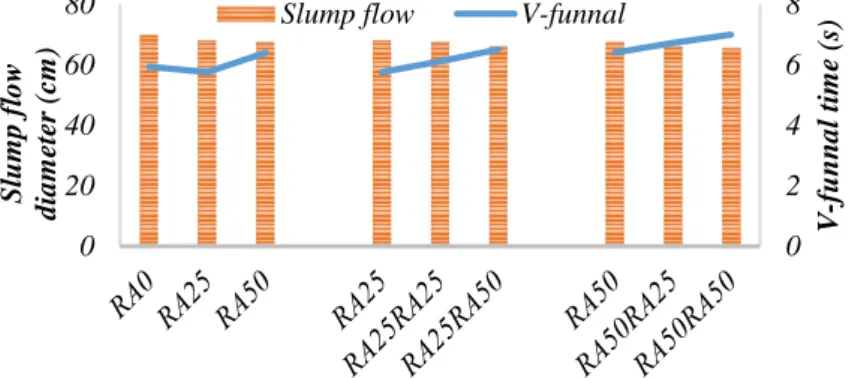
CONCLUSION
However, no segregation was observed in any of the SCHPC mixtures with the suggested material ratios. For SCHPC, the target drop flow and V-funnel class could be successfully produced at the same w/b and using any of the proposed CRMs, viz. using WPP up to 15% in the case of pure NA or with the incorporation of RCA allows better mechanical performance than that of the reference, but the emission dose is not recommended.
Only a few reduced materials after 56 freeze/thaw cycles of the blends contained up to 15% WPP. The optimum replacement amount of cement with any of the proposed CRMs with respect to elevated temperature was 15% for NA. The effectiveness of waste powder materials decreased at RAC, where the mortar-to-mortar bond was weakened due to large differences.
Replacement of cement up to 15% with any of the proposed waste powder materials is desirable for high temperature resistance. However, replacement of cement up to 30% with any waste powder material is not desirable.
NEW SCIENTIFIC RESULTS
- Thesis group I
- Thesis group II
- Thesis group III
- Thesis group IV
- Thesis group V
Thesis group on integrating unprocessed waste powder materials with self-compacting high-performance concrete as cement replacement materials. In this context, paste and self-compacting high-performance concrete mixes were produced with various constant and variable parameters to evaluate the efficiency of such material, in terms of activation index, mechanical properties, durability performance and fire resistance. The maximum effective substitution of cement for each of the proposed unprocessed waste powder materials is specified as a maximum of 30%.
The activation indices were shown that an increase in the age of samples incorporating waste perlite powder or waste cellular concrete up to 30% increased the activation index. Specialist group on incorporating coarse recycled concrete aggregate and unprocessed waste powder materials with self-compacting high-performance concrete as a substitute for coarse natural aggregate and cement respectively. In this framework, self-compacting high-performance concrete mixes were prepared incorporating 0%, 25% and 50% coarse recycled concrete aggregate as replacement for coarse natural aggregate and 0%, 15% and 30% each waste fly ash, waste perlite powder and waste aerated concrete as replacement for cement.
In order to evaluate the effectiveness of such material, in terms of its mechanical properties, durability performance, and fire resistance at short and long ages, as well as to produce self-compacting high-performance concrete with high sustainable value. Where the use of waste fly ash up to 15% and coarse recycled concrete aggregate up to 50% improves the mechanical and durability performance at short and long ages.
FUTURE PERSPECTIVE
A study of mechanical and physical properties of recycled aggregate concrete (RAC) with and without silica fume. Long-term mechanical properties of self-compacting concrete made with slag cement and supplementary cementitious materials. The influence of recycled aggregates from precast elements on the mechanical properties of structural self-compacting concrete.
On the influence of fraction and form of coarse aggregate on the rheological properties of self-compacting concrete. Effect of base concrete quality on the properties of high-performance recycled aggregate concrete. Comparison of the mechanical properties of self-compacting concrete with the corresponding properties of conventional concrete.
Properties of self-compacting concrete on fresh and hardened with masonry residues and recycled concrete. Effects of expanded perlite aggregate and different curing conditions on the physical and mechanical properties of self-compacting concrete.
